Showing Spotlights 377 - 384 of 547 in category All (newest first):
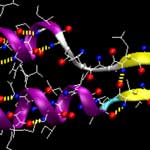 In animal cells, the well known cytoskeletal proteins actin microfilaments and microtubules are accompanied by a third filament system that in humans consist of a family of more than 70 proteins. These fibrous proteins are absent from both plants and fungi, and have been linked to serious human diseases including cancer, muscle dystrophies and rapid aging disease. Their name, intermediate filament, was coined back in 1978 because their diameters - about 10 nanometers - appeared to be intermediate in size between those of microtubules and microfilaments. Their atomistic-level molecular structure remains elusive, and as a consequence, the understanding of the biological role in physiological and disease states is still in its infancy. Researchers now report a breakthrough in explaining the structural and mechanistic origin of the unique mechanical properties of intermediate filaments. By combining atomistic and molecular modeling with experimental studies, the researchers report a multi-scale analysis that showed that the mechanical properties of intermediate filaments are controlled by their characteristic hierarchical makeup.
In animal cells, the well known cytoskeletal proteins actin microfilaments and microtubules are accompanied by a third filament system that in humans consist of a family of more than 70 proteins. These fibrous proteins are absent from both plants and fungi, and have been linked to serious human diseases including cancer, muscle dystrophies and rapid aging disease. Their name, intermediate filament, was coined back in 1978 because their diameters - about 10 nanometers - appeared to be intermediate in size between those of microtubules and microfilaments. Their atomistic-level molecular structure remains elusive, and as a consequence, the understanding of the biological role in physiological and disease states is still in its infancy. Researchers now report a breakthrough in explaining the structural and mechanistic origin of the unique mechanical properties of intermediate filaments. By combining atomistic and molecular modeling with experimental studies, the researchers report a multi-scale analysis that showed that the mechanical properties of intermediate filaments are controlled by their characteristic hierarchical makeup.
Oct 13th, 2009
 Here is a no-brainer (excuse the pun): If you had brain tumor, would you rather receive your medicine through an injection in the arm or have a hole drilled in your skull? Even if you opted for the 'hole-in-the-skull' method, brain cancers are often inoperable due to their location within critical brain regions or because they are too small to detect. Nanotechnology offers a vision for a smart drug approach to fighting tumors: the ability of nanoparticles to locate cancer cells and destroy them with single-cell precision. One of the most important applications for such nanoparticulate drug delivery could be the delivery of the drug payload into the brain. However, crossing the brains protective shield, the blood-brain barrier, is a considerable challenge. Novel targeted nanomedicine drug delivery systems that are able to cross this barrier bring us closer to this vision of brain cancer destroying drugs.
Here is a no-brainer (excuse the pun): If you had brain tumor, would you rather receive your medicine through an injection in the arm or have a hole drilled in your skull? Even if you opted for the 'hole-in-the-skull' method, brain cancers are often inoperable due to their location within critical brain regions or because they are too small to detect. Nanotechnology offers a vision for a smart drug approach to fighting tumors: the ability of nanoparticles to locate cancer cells and destroy them with single-cell precision. One of the most important applications for such nanoparticulate drug delivery could be the delivery of the drug payload into the brain. However, crossing the brains protective shield, the blood-brain barrier, is a considerable challenge. Novel targeted nanomedicine drug delivery systems that are able to cross this barrier bring us closer to this vision of brain cancer destroying drugs.
Oct 7th, 2009
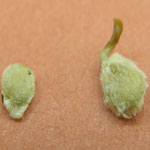 To what degree nanoparticles are uptaken by plants and what their effect is on plant development is an important issue in determining the environmental impact of nanomaterials. Previously we have covered several research projects that have begun to explore nanotechnology's impact on major food crops and some of them have demonstrated quite a negative impact. But some research results also show a possible positive effect, like a recent study that demonstrates that carbon nanotubes (CNTs) can dramatically accelerate the germination and growth of tomato seeds. Work like this contributes to an important body of interdisciplinary research where nanotechnology, plant biology and biotechnology converge to open new perspectives for solving some of the important challenges of our times such as increased food and biofuel production.
To what degree nanoparticles are uptaken by plants and what their effect is on plant development is an important issue in determining the environmental impact of nanomaterials. Previously we have covered several research projects that have begun to explore nanotechnology's impact on major food crops and some of them have demonstrated quite a negative impact. But some research results also show a possible positive effect, like a recent study that demonstrates that carbon nanotubes (CNTs) can dramatically accelerate the germination and growth of tomato seeds. Work like this contributes to an important body of interdisciplinary research where nanotechnology, plant biology and biotechnology converge to open new perspectives for solving some of the important challenges of our times such as increased food and biofuel production.
Sep 29th, 2009
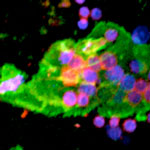 Bionanotechnology researchers are experimenting with techniques for attaching DNA nanoarrays to cell surfaces for various reasons: to label cell surfaces with functionalized micrometer-sized patches; to deliver materials such as nanoparticles or carbon nanotubes to cell surfaces; to deliver nucleic acids into the cell for gene silencing; or to engineer microtissues of cell/cell networks by using self-hybridizing properties of single stranded DNA molecules. A team of scientists in California has now successfully attached self-assembled DNA structures to cancer cells using two different methods. This is one of the first illustrations of the biomedical relevance of DNA arrays.
Bionanotechnology researchers are experimenting with techniques for attaching DNA nanoarrays to cell surfaces for various reasons: to label cell surfaces with functionalized micrometer-sized patches; to deliver materials such as nanoparticles or carbon nanotubes to cell surfaces; to deliver nucleic acids into the cell for gene silencing; or to engineer microtissues of cell/cell networks by using self-hybridizing properties of single stranded DNA molecules. A team of scientists in California has now successfully attached self-assembled DNA structures to cancer cells using two different methods. This is one of the first illustrations of the biomedical relevance of DNA arrays.
Sep 22nd, 2009
 According to the World Health Organization, lung cancer is the leading cancer-related cause of death, accounting for 18 percent of cancer deaths and killing about 1.3 million people worldwide every year. Conventional diagnostic methods for lung cancer occasionally miss tumors and they are costly and unsuitable for widespread screening. Breath testing is a fast, non-invasive diagnostic method that links specific volatile organic compounds (VOCs) in exhaled breath to medical conditions. However, these techniques - gas chromatography/mass spectrometry, ion flow tube mass spectrometry, laser absorption spectrometry, infrared spectroscopy, polymer-coated surface acoustic wave sensors and coated quartz crystal microbalance sensors - are expensive, slow, and require complex instruments. A multidisciplinary research team at Technion - Israel Institute of Technology have now demonstrated a highly sensitive, stable, relatively inexpensive, and fast-response nine-sensor array that consists of gold nanoparticles functionalized with different organic groups that respond to various VOCs that are relevant to lung cancer.
According to the World Health Organization, lung cancer is the leading cancer-related cause of death, accounting for 18 percent of cancer deaths and killing about 1.3 million people worldwide every year. Conventional diagnostic methods for lung cancer occasionally miss tumors and they are costly and unsuitable for widespread screening. Breath testing is a fast, non-invasive diagnostic method that links specific volatile organic compounds (VOCs) in exhaled breath to medical conditions. However, these techniques - gas chromatography/mass spectrometry, ion flow tube mass spectrometry, laser absorption spectrometry, infrared spectroscopy, polymer-coated surface acoustic wave sensors and coated quartz crystal microbalance sensors - are expensive, slow, and require complex instruments. A multidisciplinary research team at Technion - Israel Institute of Technology have now demonstrated a highly sensitive, stable, relatively inexpensive, and fast-response nine-sensor array that consists of gold nanoparticles functionalized with different organic groups that respond to various VOCs that are relevant to lung cancer.
Aug 31st, 2009
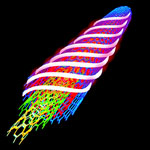 Various forms of hyperthermia - a form of cancer treatment with elevated temperature in the range of 41-45C - have been intensively developed for the past few decades to provide cancer clinics with more effective and advanced cancer therapy techniques. The recent use of nanomaterials has shown promising for developing more effective hyperthermia agents. While most nanomedical hyperthermia research is conducted with various nanoparticles, carbon nanotubes are also of interest in these thermal ablation applications. So far, however, the utility of carbon nanotubes for in vivo use has been limited by self-association - i.e. they stick to each other. A new study has now demonstrated that DNA-encasement of multi-walled carbon nanotubes (MWCNTs) results in well-dispersed, single MWCNTs that are soluble in water and that display enhanced heat production efficiency relative to non-DNA-encased MWCNTs.
Various forms of hyperthermia - a form of cancer treatment with elevated temperature in the range of 41-45C - have been intensively developed for the past few decades to provide cancer clinics with more effective and advanced cancer therapy techniques. The recent use of nanomaterials has shown promising for developing more effective hyperthermia agents. While most nanomedical hyperthermia research is conducted with various nanoparticles, carbon nanotubes are also of interest in these thermal ablation applications. So far, however, the utility of carbon nanotubes for in vivo use has been limited by self-association - i.e. they stick to each other. A new study has now demonstrated that DNA-encasement of multi-walled carbon nanotubes (MWCNTs) results in well-dispersed, single MWCNTs that are soluble in water and that display enhanced heat production efficiency relative to non-DNA-encased MWCNTs.
Aug 13th, 2009
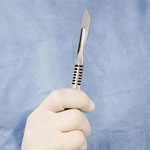 Much attention of nanotechnology researchers has recently been paid to the fabrication of free-standing, ultra-thin films. These systems have been developed for use in a wide variety of fields such as nano-separation membranes or nanosensors for electrochemical and photochemical applications. In a first report on the fabrication of free-standing nanosheets for biomedical applications, scientists in Japan have developed a biodegradable thin film of only about 20 nanometers thickness that could replace surgical stitches. In experiments, they found that the sealing operation repaired the incision completely without scars and tissue adhesion. This approach would constitute an ideal candidate for an alternative to conventional suture/ligation procedures, from the perspective not only of a minimally invasive surgical technique but also reduction of operation times.
Much attention of nanotechnology researchers has recently been paid to the fabrication of free-standing, ultra-thin films. These systems have been developed for use in a wide variety of fields such as nano-separation membranes or nanosensors for electrochemical and photochemical applications. In a first report on the fabrication of free-standing nanosheets for biomedical applications, scientists in Japan have developed a biodegradable thin film of only about 20 nanometers thickness that could replace surgical stitches. In experiments, they found that the sealing operation repaired the incision completely without scars and tissue adhesion. This approach would constitute an ideal candidate for an alternative to conventional suture/ligation procedures, from the perspective not only of a minimally invasive surgical technique but also reduction of operation times.
Jul 31st, 2009
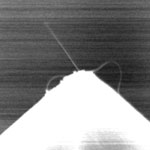 Carbon nanotubes, like the nervous cells of our brain, are excellent electrical signal conductors and can form intimate mechanical contacts with cellular membranes, thereby establishing a functional link to neuronal structures. There is a growing body of research on using nanomaterials in neural engineering. Most studies simply grow carbon nanotubes over microelectrodes to interface with neurons extracellularly. Such an extracellular interface is non-invasive, but it only allows the action potential of neurons to be recorded. In contrast, an intracellular interface allows all of the sophisticated neural activity to be probed, but it is an invasive approach that usually destroys the neuron. Now, new research by scientists in Taiwan is the first to explore the feasibility of using CNTs to probe neural activity intracellularly, opening the way for intracellular neural probes that minimize damage to the neuron.
Carbon nanotubes, like the nervous cells of our brain, are excellent electrical signal conductors and can form intimate mechanical contacts with cellular membranes, thereby establishing a functional link to neuronal structures. There is a growing body of research on using nanomaterials in neural engineering. Most studies simply grow carbon nanotubes over microelectrodes to interface with neurons extracellularly. Such an extracellular interface is non-invasive, but it only allows the action potential of neurons to be recorded. In contrast, an intracellular interface allows all of the sophisticated neural activity to be probed, but it is an invasive approach that usually destroys the neuron. Now, new research by scientists in Taiwan is the first to explore the feasibility of using CNTs to probe neural activity intracellularly, opening the way for intracellular neural probes that minimize damage to the neuron.
Jul 22nd, 2009
 In animal cells, the well known cytoskeletal proteins actin microfilaments and microtubules are accompanied by a third filament system that in humans consist of a family of more than 70 proteins. These fibrous proteins are absent from both plants and fungi, and have been linked to serious human diseases including cancer, muscle dystrophies and rapid aging disease. Their name, intermediate filament, was coined back in 1978 because their diameters - about 10 nanometers - appeared to be intermediate in size between those of microtubules and microfilaments. Their atomistic-level molecular structure remains elusive, and as a consequence, the understanding of the biological role in physiological and disease states is still in its infancy. Researchers now report a breakthrough in explaining the structural and mechanistic origin of the unique mechanical properties of intermediate filaments. By combining atomistic and molecular modeling with experimental studies, the researchers report a multi-scale analysis that showed that the mechanical properties of intermediate filaments are controlled by their characteristic hierarchical makeup.
In animal cells, the well known cytoskeletal proteins actin microfilaments and microtubules are accompanied by a third filament system that in humans consist of a family of more than 70 proteins. These fibrous proteins are absent from both plants and fungi, and have been linked to serious human diseases including cancer, muscle dystrophies and rapid aging disease. Their name, intermediate filament, was coined back in 1978 because their diameters - about 10 nanometers - appeared to be intermediate in size between those of microtubules and microfilaments. Their atomistic-level molecular structure remains elusive, and as a consequence, the understanding of the biological role in physiological and disease states is still in its infancy. Researchers now report a breakthrough in explaining the structural and mechanistic origin of the unique mechanical properties of intermediate filaments. By combining atomistic and molecular modeling with experimental studies, the researchers report a multi-scale analysis that showed that the mechanical properties of intermediate filaments are controlled by their characteristic hierarchical makeup.
 Subscribe to our Nanotechnology Spotlight feed
Subscribe to our Nanotechnology Spotlight feed





